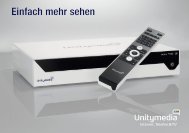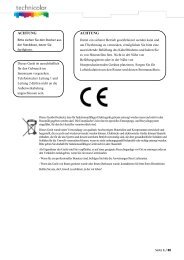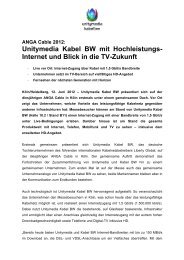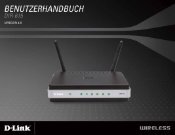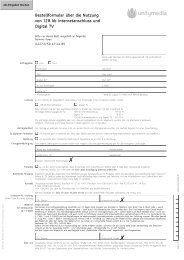Configuration - Unitymedia
Configuration - Unitymedia
Configuration - Unitymedia
You also want an ePaper? Increase the reach of your titles
YUMPU automatically turns print PDFs into web optimized ePapers that Google loves.
Section 4 - Security<br />
Wireless Security<br />
This section will show you the different levels of security you can use to protect your data from intruders. The<br />
DIR-655 offers the following types of security:<br />
• WPA2 (Wi-Fi Protected Access 2)<br />
• WPA (Wi-Fi Protected Access)<br />
• WEP (Wired Equivalent Privacy)<br />
• WPA2-PSK (Pre-Shared Key)<br />
• WPA-PSK (Pre-Shared Key)<br />
What is WEP?<br />
WEP stands for Wired Equivalent Privacy. It is based on the IEEE 802.11 standard and uses the RC4 encryption<br />
algorithm. WEP provides security by encrypting data over your wireless network so that it is protected as it is transmitted<br />
from one wireless device to another.<br />
To gain access to a WEP network, you must know the key. The key is a string of characters that you create. When<br />
using WEP, you must determine the level of encryption. The type of encryption determines the key length. 128-bit<br />
encryption requires a longer key than 64-bit encryption. Keys are defined by entering in a string in HEX (hexadecimal<br />
- using characters 0-9, A-F) or ASCII (American Standard Code for Information Interchange – alphanumeric characters)<br />
format. ASCII format is provided so you can enter a string that is easier to remember. The ASCII string is converted to<br />
HEX for use over the network. Four keys can be defined so that you can change keys easily.<br />
D-Link DIR-655 User Manual<br />
65




